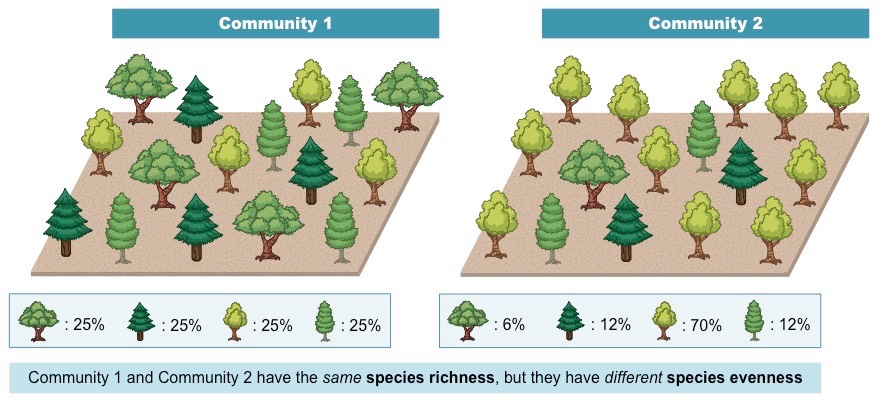 Did you know that 175 species go extinct every day? This number is over 1,000 times the “natural” rate of extinction!
Did you know that 175 species go extinct every day? This number is over 1,000 times the “natural” rate of extinction!
On October 23, National Geographic hosted the first celebration of Half-Earth Day. Half-Earth Day is a celebration that brings together scientists and leaders in conservation to share their ideas.
The day’s name is based on studies that show that if we can conserve half of our land and seas, 85% of species will be protected from extinction.
It is extremely important to protect our Earth’s species from extinction to protect biodiversity. But, how do we define biodiversity?
What is Biodiversity?

Biodiversity is based on two factors: species richness and species evenness.
Species richness is the total number of different species in an area. Species evenness is the distribution of the species populations in an area. A population is the number of individuals of the same species.
For example, in pond one there are two Large-mouth Bass, one Catfish, and six Minnows. In pond two, there are four Large-mouth Bass and four Catfish. Pond one has greater species richness (three different species), but pond two has greater species evenness (each species has an equal population).
However, species richness is prioritized when determining biodiversity, so pond one would have had greater biodiversity than pond two.
The Importance of Biodiversity

One reason biodiversity is important is that the majority of modern medicines originate from species only found in very biodiverse areas.
Quinine, an aid for the cure to malaria, was extracted from the bark of the Cinchona tree found in the tropical rainforests of Latin America. Quinine was widely used to treat malaria in the 17th century, even curing King Charles II of England.
If biodiversity continues to plummet at the current rate, we may lose the opportunity to discover essential medicines like Quinine.
Biodiverse ecosystems are also responsible for providing food, pollination, and nutrient cycling. If one species goes extinct, it can harm the entire ecosystem.
In addition, higher biodiversity correlates to a higher tolerance. An area with a greater variety of species is more likely to have species with high tolerance. When a species has a high tolerance, they are more likely to survive a change in their environment.
For example, a more biodiverse ecosystem would have more species survive a natural disaster. When Hurricane Maria hit Puerto Rico's National Forest, the canopy of the forest was destroyed. Now, species that can tolerate the harsh sun are able to survive, but species that cannot live without the protection from the sun the canopy provided are threatened with extinction.
The Goal of Half-Earth Day
With human interference, climate change, and natural disasters causing a rapid increase in species extinction, biodiversity on Earth is suffering. Over the history of our planet, we have gone through five mass extinctions, where the diversity of life has abruptly plummeted. Now we are facing what some scientists are calling the sixth extinction.
As more species go extinct, we risk ecosystem collapse, losing the sources of new medicines and research subjects.
Half-Earth Day was created to encourage collaboration among scientists to produce innovative solutions to our biodiversity issue. Another goal of Half-Earth Day is to increase the public's awareness about the declining biodiversity and extinction issues.
You can do your part by making eco-friendly choices like carpooling and purchasing products from companies that operate under policies that protect the environment. If you want to learn more about the sixth extinction, check out the movie Racing Extinction.







